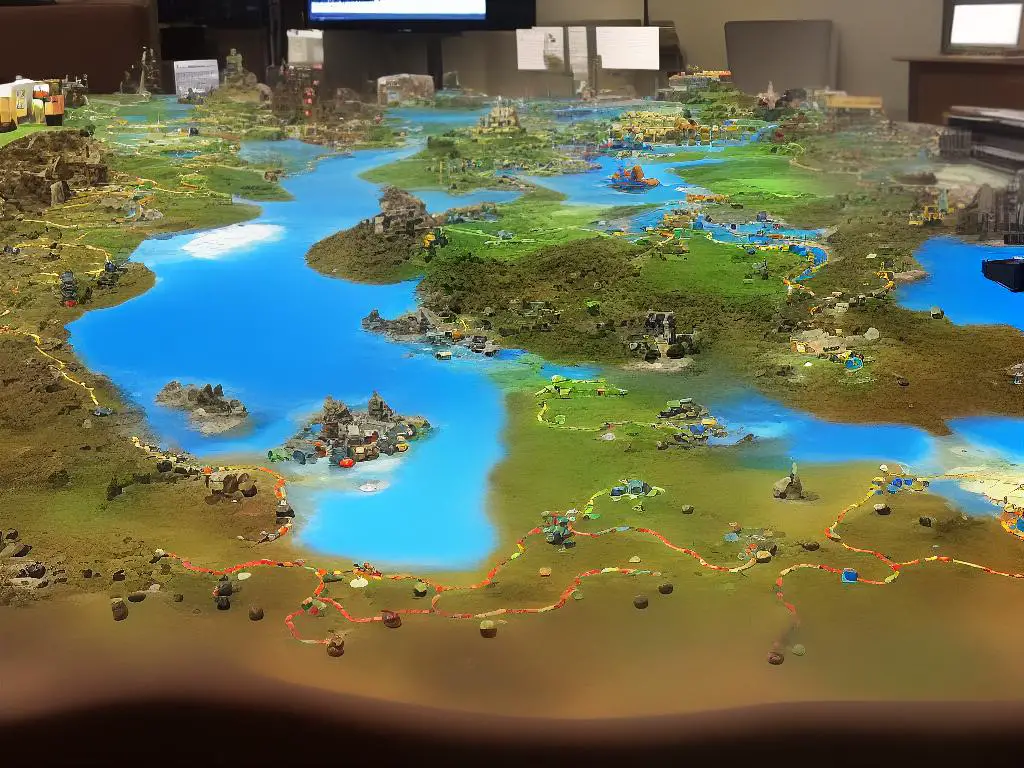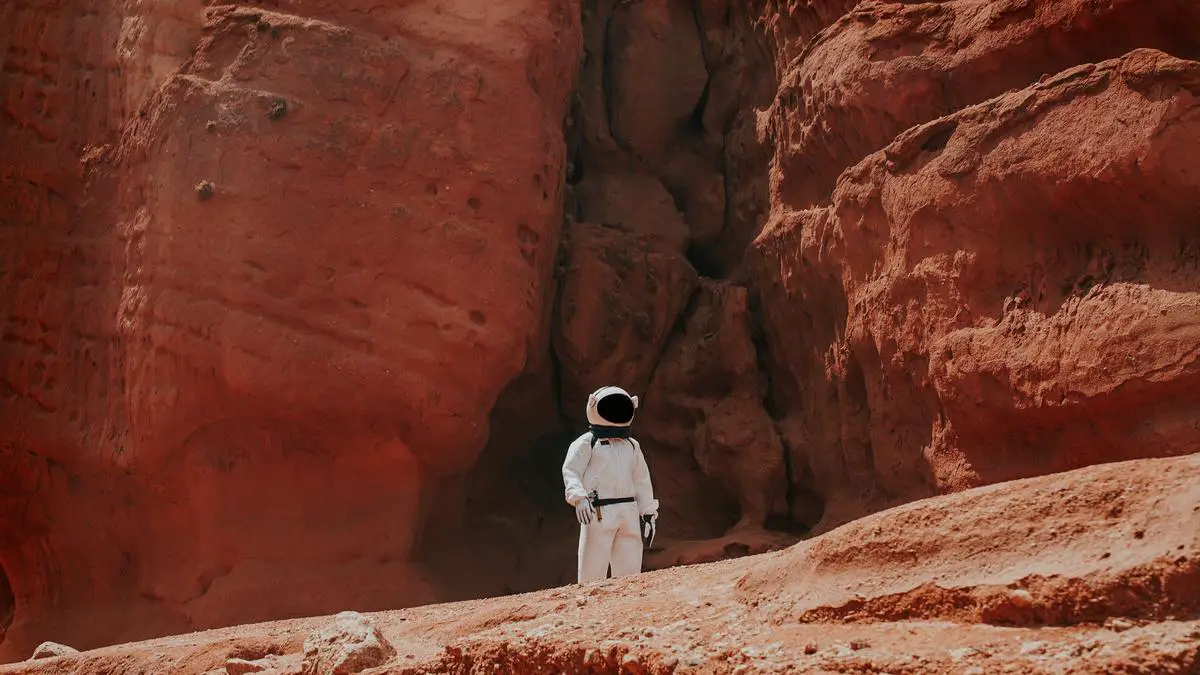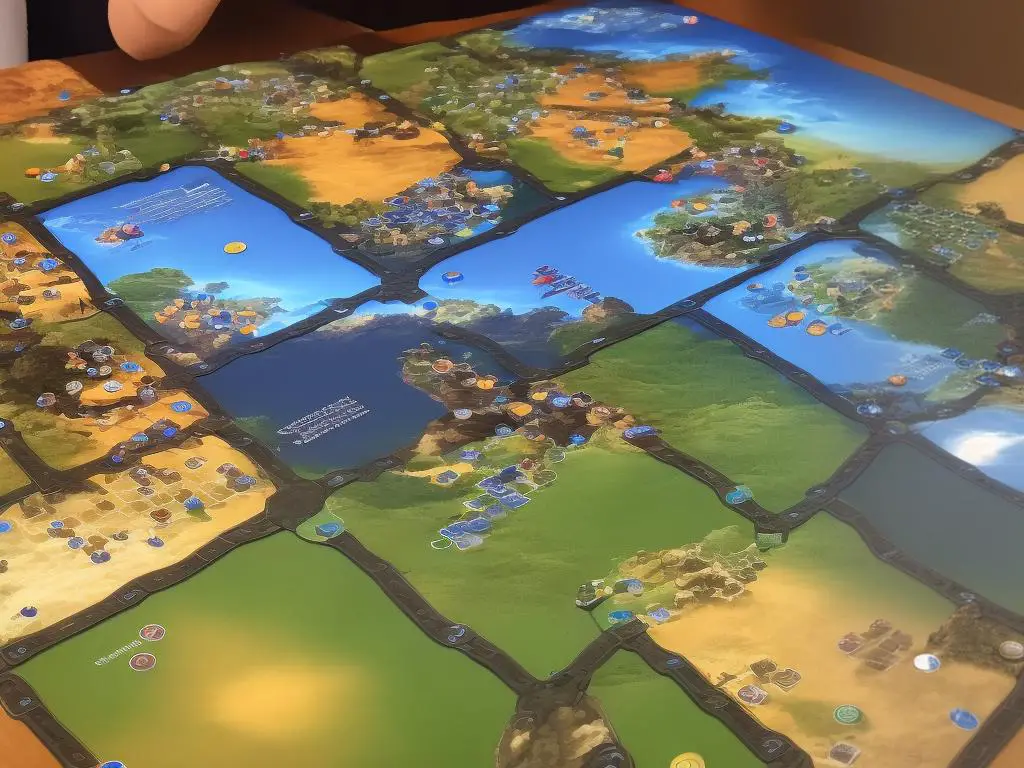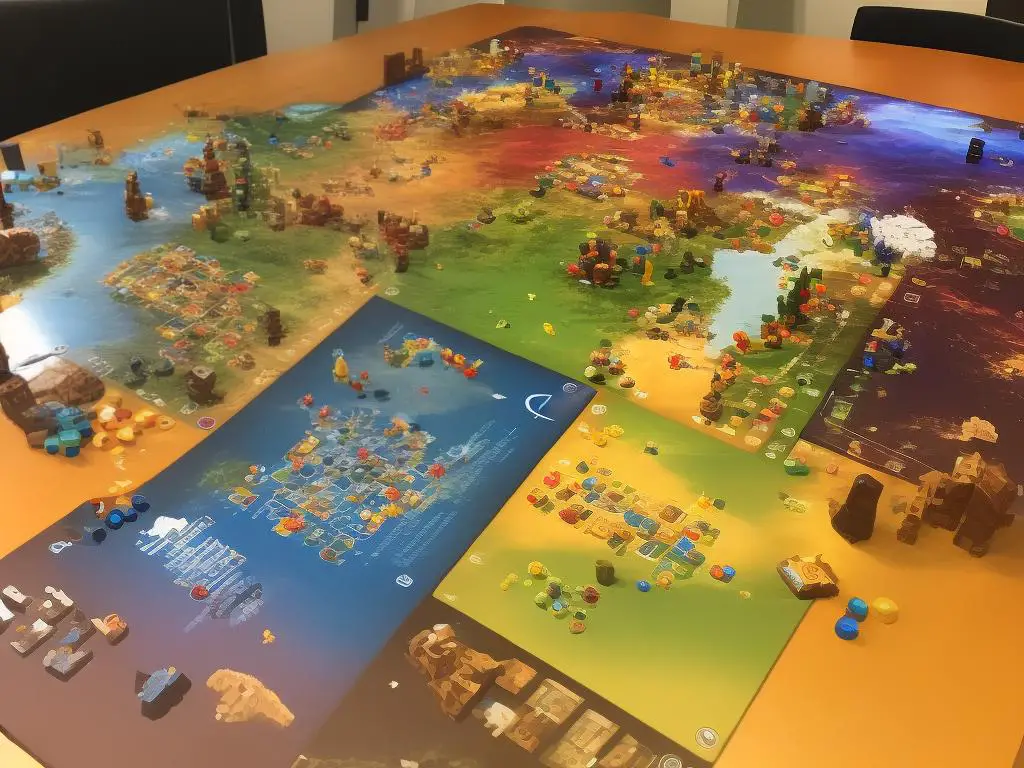In recent years, the board game industry has experienced a remarkable resurgence, fuelled by the growing demand for engaging and intellectually stimulating tabletop experiences. Among these modern classics is Terraforming Mars, a science-based strategy game that has captured the hearts and minds of enthusiasts the world over. This fascinating game not only provides a thrilling and strategic experience but also delves into the captivating concept of transforming the Red Planet into a habitable environment. In this article, we explore the various aspects that make Terraforming Mars stand out among its competitors, discuss the scientific backbone of the game, examine its reception and impact within the community, and provide guidance on selecting the ideal board game to suit your individual preferences.
Overview of Terraforming Mars
Terraforming Mars: Overview
Terraforming Mars, designed by Jacob Fryxelius and published by FryxGames in 2016, is a popular strategy board game that sets players in the 25th century with a mission to colonize and terraform Mars, making it habitable for humans. Its unique blend of card-based gameplay, resource management, and strategy has garnered a substantial following among board game enthusiasts worldwide.
Game Mechanics and Theme
Terraforming Mars offers a combination of card-driven actions and resource management, coupled with strong thematic elements that bring an exciting space-exploration experience to life. Each player takes on the role of a corporation sponsored by the World Government to execute the massive undertaking of terraforming Mars, allocating resources and making strategic decisions to achieve the most successful space colonization.
The game features unique game mechanics, such as an Economy system that allows players to accumulate MegaCredits, which they can use to further develop their resources or employ technological advancements. There are also several categories of cards in the game, including Project Cards and Corporation Cards, each with distinct actions and abilities that significantly impact gameplay.
Gameplay Experience
Terraforming Mars offers a deeply strategic gameplay experience, requiring players to plan their moves carefully and make critical decisions to achieve their goals while simultaneously keeping an eye on their rivals’ actions. The game begins with each player receiving a starting hand of ten cards and a Corporation Card, representing their corporation’s unique abilities.
The main objective is to earn the most Terraform Ratings (TR), which are gained by raising the temperature and oxygen levels, creating oceans, and establishing cities on Mars. Players need to balance their resources carefully and weigh the pros and cons of each decision made, ensuring the best plans for their corporations.
As the game progresses, players need to adapt and change their strategy, based on the evolving state of the game board and their opponents’ moves. This provides an engaging and challenging gameplay experience that keeps players hooked and invested for multiple play sessions.
Terraforming Mars vs. Other Board Games
One of the factors that set Terraforming Mars apart from other board games is its level of depth in strategic gameplay, offering multiple pathways to victory and a unique game experience with every play. The balance between card actions, resource management, and the terraforming process creates a sense of achievement as players watch their efforts come to fruition.
Furthermore, the strong thematic elements and scientifically accurate portrayal of space colonization make players feel genuinely immersed in the game’s universe. These components, combined with the outstanding artwork and high-quality components, create an aesthetically pleasing experience that sets Terraforming Mars apart from other board games.
Additionally, Terraforming Mars has a great balance of competitive gameplay and cooperative elements, as players work together to achieve the worldwide goal of terraforming Mars while individually striving to be the most successful corporation. This dynamic can be seen in the collaborative process of increasing oxygen levels and temperature, while also competing for prime locations on the planet.
Conclusion
In conclusion, Terraforming Mars stands out among other board games due to its unique, immersive, and strategically challenging experience. The engaging blend of card-driven gameplay, resource management, theme, and diverse mechanics sets it apart from competitors. This enticing mix of strategy, competition, and cooperation appeals to players seeking a dynamic and refreshing gaming experience. With soaring popularity and several expansions already available, Terraforming Mars continues to captivate and intrigue board gamers worldwide.

Comparing Terraforming Mars to its Competitors
Gameplay Complexity
When comparing Terraforming Mars to other top board games, it’s essential to consider gameplay complexity. Terraforming Mars is renowned for its intricate and engaging gameplay, providing players with a variety of options and paths to victory. This depth and complexity measure up to other highly-regarded games such as Scythe, Great Western Trail, and Gaia Project, which also boast dynamic gameplay with multiple strategic layers. These games often require players to adapt to ever-changing situations and challenges on the board.
However, the complexity of Terraforming Mars may make it less accessible for newcomers to the board gaming world. Games like Ticket to Ride and Catan, while still offering strategic elements, feature simpler mechanics that may be more appealing to casual gamers or those just starting their journey into board games.
Replayability
Terraforming Mars has exceptionally high replayability thanks to its randomized setup, numerous project cards, and variable player corporation abilities. Each playthrough presents different opportunities and challenges, making each game feel distinct from the last.
Similarly, Dominion, another top-rated board game, is famous for its high replay value; its variety of kingdom cards creates almost limitless combinations of setups. Other games with high replayability include Scythe, with its asymmetric player abilities, and Spirit Island, with its diverse spirits and modular island setup.
Player Interaction
Player interaction in Terraforming Mars comes in various forms, such as competing for awards and milestones, vying for control over valuable tiles on the board, and strategically timing actions to maximize efficiency. However, direct conflict is limited, and most player interactions have a more subtle, indirect nature.
In comparison, some board games like Twilight Imperium, Cosmic Encounter, and Root encourage direct player negotiation and conflict. Other games, such as Catan and Ticket to Ride, also emphasize player interaction, with trading and blocking of resources and routes being essential components of winning strategies.
Strategic Depth
Terraforming Mars offers vast strategic depth through its many components. Players must skillfully manage their resources, carefully select project cards, and strategically place tiles on the Martian surface to maximize their benefits. Additionally, each player’s chosen corporation offers unique abilities, promoting specialization and various winning paths.
Other games with high strategic depth include Gloomhaven, with its progressive and branching narrative, and Mage Knight, which combines deck-building and exploration elements. Additionally, games like Great Western Trail and Gaia Project also provide deep strategy with various options to outwit and outperform opponents.
Terraforming Mars, a popular and award-winning board game designed by Jacob Fryxelius and published by FryxGames in 2016, stands out among top contenders in the board game community. It boasts complex gameplay, high replayability, engaging player interaction, and deep strategic options. These factors place Terraforming Mars alongside highly-praised games such as Scythe, Great Western Trail, Dominion, and Gloomhaven, all of which offer players an engaging and diverse gaming experience.

Photo by lobosnico on Unsplash
The Science Behind Terraforming Mars
Overview
In Terraforming Mars, players are transported to a future where Mars has been colonized and is now undergoing a large-scale transformation or terraforming process to make it more Earth-like and habitable. As corporations compete to contribute the most to the terraforming efforts while maximizing their own profit, players must navigate real scientific concepts related to terraforming Mars. This includes altering the atmosphere, temperature, and ocean levels, as well as developing the necessary technologies and infrastructure for life on Mars. The combination of realistic concepts and strategic gameplay ensures an immersive and educational experience for players.
Scientific Concepts
Terraforming Mars incorporates a variety of scientific concepts, drawing on diverse fields such as physics, chemistry, biology, and engineering. These concepts are not only integral to the game’s mechanics, but also provide an educational dimension to the gaming experience.
Atmosphere, Temperature, and Oceans
The main goal of terraforming Mars in the game is to increase the planet’s surface temperature, atmospheric pressure, and ocean coverage. To accomplish this, players perform actions that can include:
- Releasing greenhouse gases to warm the planet
- Building heat-generating projects like nuclear plants
- Creating oceans through importing ice from Earth or melting Martian ice caps
- Planting forests to increase oxygen levels as they grow
These actions are based on actual scientific proposals for terraforming Mars, such as building large space mirrors to reflect sunlight onto the Martian surface or seeding the planet with genetically engineered bacteria to produce oxygen.
Technologies and Infrastructure
Players must develop and implement various technologies and infrastructure projects to facilitate life on Mars. These include building cities, transportation systems, and energy production facilities, as well as developing biotechnologies such as crops engineered to withstand harsh Martian conditions. This aspect of the game encourages players to think strategically about which projects to pursue, based on their current resources and the evolving state of the planet.
Space and Resource Management
Players must consider the efficient use of resources and space on the game board. As the game progresses, the placement of projects on the Martian surface can impact the global parameters (temperature, oxygen, and ocean levels) and influence other players’ strategies. This need to optimize space usage can lead to interesting trade-offs, similar to real-world space and resource management challenges that Martian colonists would face.
Accuracy and Real-world Relevance
While the game takes some liberties for the sake of fun and playability, many of the scientific concepts underpinning Terraforming Mars are grounded in real-world research and proposals for colonizing Mars. The game introduces players to some of these ideas, sparking curiosity and interest in the actual science and engineering challenges that humanity may encounter as we strive to make Mars habitable.
That said, Terraforming Mars does simplify and abstract some concepts for playability. For example, the game uses a single currency called “MegaCredits” to represent resources, while actual Mars colonization would require the management of various specific resources like water, energy, and building materials.
Terraforming Mars vs. Other Board Games
Among the many popular board games available, Terraforming Mars stands out due to its strong focus on science, technology, and space exploration. While other games may offer engaging and strategic gameplay, Terraforming Mars goes a step further by incorporating real-life concepts and challenges related to Mars colonization. This unique aspect sets it apart from other options, offering not only a fun and challenging gaming experience but also an opportunity to learn about the actual science and technologies that may one day enable humanity to settle on Mars.

Community Reception and Impact
Terraforming Mars: Community Reception and Impact
Since its debut in 2016, Terraforming Mars has captured the interest of board game enthusiasts and critics alike. Developed by Jacob Fryxelius and published by FryxGames, this highly strategic game sets players as corporations vying to terraform Mars over several generations. By raising the temperature, oxygen level, and ocean coverage, players aim to establish the most successful, habitable planet. With its distinct focus on real-world science and concepts, Terraforming Mars has made a lasting impact on the gaming community, offering a unique and immersive experience that goes beyond traditional board games.
Awards and Rankings
Terraforming Mars has been consistently well-received since its debut, amassing numerous awards and nominations. Some of its most notable accolades include the 2017 Deutscher Spiele Preis Best Family/Adult Game, the 2017 Diana Jones Award for Excellence in Gaming, and the 2016 Golden Geek Most Innovative Board Game. These awards are a testament to the game’s innovative design, engaging gameplay, and educational value.
BoardGameGeek, the premier website for board game hobbyists, currently ranks Terraforming Mars as the #4 board game of all time. The game’s rank reflects the high praise and ratings it has received from the community of board game enthusiasts and critics alike.
Online Forums and Discussions
The community surrounding Terraforming Mars is active and engaged. Online forums, such as Reddit and BoardGameGeek, are filled with countless discussions and recommendations dedicated to the game. Players share strategies, exchange opinions on the game’s mechanics, and provide positive feedback regarding the game’s depth and replayability. Many gamers also express their appreciation for the scientific accuracy that Terraforming Mars upholds in its gameplay.
Expansion Packs and Additional Content
In response to the game’s popularity, several expansion packs have been released to enhance and diversify the Terraforming Mars experience. Currently, there are five official expansions: Hellas & Elysium, Venus Next, Prelude, Colonies, and Turmoil. Each expansion introduces new gameplay mechanics, cards, and components, keeping the game fresh and engaging for veteran players.
Moreover, the community routinely shares and creates additional content, such as fan-made expansion packs, alternate board designs, and 3D-printed components. This user-generated content further enriches the gameplay experience and demonstrates the game’s lasting impact on its fan base.
Influence on the Science-Based Board Game Landscape
Terraforming Mars has been at the forefront of driving the popularity and success of science-based board games in recent years. The game’s engaging mechanics and informative elements have earned appreciation and respect within the board game community, leading to the rise of other games that share similar education-oriented themes.
Renowned games such as Gloomhaven, Wingspan, and Scythe showcase related features of resource management, strategic thinking, and scientifically rooted gameplay. This growing trend of science-based board games provides players with both a captivating and informative experience, increasing demand for thought-provoking games in the hobby.

Selecting the Best Board Game for You
Determining Your Board Game Preferences
Before delving into comparisons between Terraforming Mars and other board games, it’s crucial to identify your preferences as a player. Individual inclinations differ, and selecting the ideal board game that aligns with your personal interests guarantees countless hours of enjoyment. Consider the following questions as you delve into your preferences:
- Do you enjoy playing games with intricate mechanics and profound strategy, or do you prefer simpler, casual games?
- What is your favorite game genre? Take into account whether you prefer cooperative, competitive, or party-style games.
- How much time are you willing to dedicate to a game? While some games may take under an hour to complete, more complex games could last for several hours.
- How many players typically participate in your gaming group?
Comparing Terraforming Mars with Other Board Games
Complexity
Terraforming Mars is a medium-heavy strategy game in which players assume the role of corporations competing to colonize and develop the Red Planet. The game features complex mechanics, card drafting, and resource management as players work together and against each other to meet specific goals. This game is best suited for players who enjoy strategic depth and are willing to invest time in learning and mastering the game’s many elements.
If you prefer a less complex gaming experience, there are several lighter strategy games or casual games that may better suit your tastes. Games like Ticket to Ride or Settlers of Catan, which involve simpler mechanics and shorter playtimes, may be more suitable for more casual players.
Game Genre
Terraforming Mars falls under the category of competitive strategy games, with some cooperative elements coming from the shared goal of making Mars habitable. If you enjoy games that pit players against each other with strategic planning and critical thinking, Terraforming Mars could be a great fit for your gaming preferences.
However, if you prefer cooperative games where players work together to achieve a collective goal, consider games such as Pandemic or Flash Point: Fire Rescue. Alternatively, if you enjoy more social, party-style games, consider games like Codenames or Telestrations.
Play Time
The average playtime for Terraforming Mars is around two to three hours, which can vary based on the number of players and familiarity with the game’s mechanics. If you are seeking shorter, quicker games, you might want to explore other options.
For quicker and more accessible board games, consider games like Splendor, Azul, or King of Tokyo. Each of these games requires less time investment, generally lasting under an hour, and still provides engaging gameplay.
Player Count
Terraforming Mars is best suited for 1-5 players, making it a versatile gaming option for solo play and small to medium gaming groups. Keep in mind that with more players, the game’s duration can increase.
If you often play with larger groups, you might want to consider games that support more players, such as 7 Wonders, Sushi Go Party!, or The Resistance. These games are designed to accommodate larger player counts without sacrificing the gameplay experience.
In conclusion, finding the best board game for you depends on your individual preferences, play style, and the type of gaming experience you seek. Considering factors like complexity, game genre, play time, and player count are crucial when exploring different gaming options. By evaluating your preferences and understanding the key aspects of various games, you can make an informed decision and select the perfect game, whether it’s Terraforming Mars or another option that better suits your needs.

Ultimately, the appeal of Terraforming Mars as a board game can be attributed to its intricate gameplay mechanics, scientifically-rooted theme, and high replayability factor. These qualities have contributed to its resounding success and its reputation as a must-try for board game enthusiasts. Navigating the vast range of board games available in today’s market can be daunting, but by considering aspects such as complexity, play time, game genre, and player count, players can find a game that aligns with their preferences and provides countless hours of entertainment. With its unique blend of strategy, science, and player interaction, Terraforming Mars has set a high bar for future titles within the board game industry.